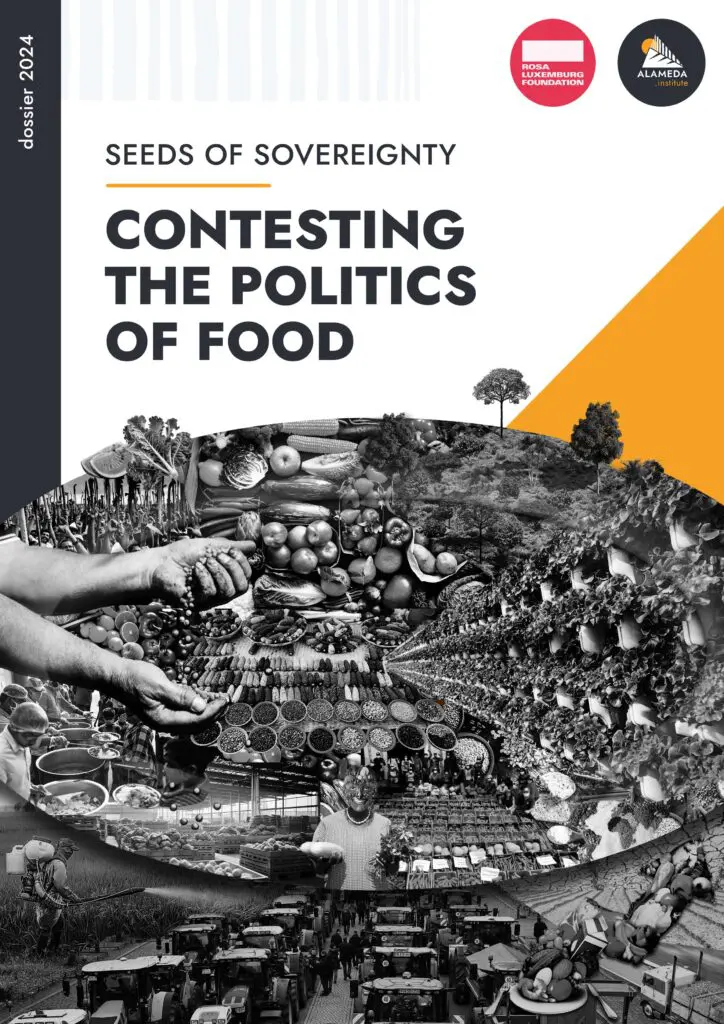VI / Da Sérvia à Ucrânia: Nem a revolução nem a contrarrevolução oferecem uma saída
On the left, discussions about the horror unfolding in Ukraine have predictably been reduced to dead-end debates that are easily shut down by angry online mobs – endless rounds about whether Russia is imperialist (or colonialist), or whether it’s NATO that is.
Other questions have surfaced with some frequency: Did NATO ‘force’ Russia to invade Ukraine with its duplicitous Drang Nach Osten? Since NATO has bombed and killed and occupied sovereign countries before, does that make Russia’s aggression in Ukraine somehow more acceptable, a crime of a lesser magnitude? Are calls for peace negotiations necessarily a dog whistle for surrender – or worse – an apologia for genocide? And should leftists just accept the horrific loss of human life in Ukraine as ‘collateral damage’ in the struggle for a glorious multipolar world?
Further, if you are not Ukrainian (or Eastern European), should you even be talking about this at all? Shouldn’t you be deferring to one of the self-appointed spokespersons of the nation, whose interests and slick PR just so happen to overlap with preferences of the West? Finally, who are the real fascists? Here too there is ample disagreement:
As one Odessan said in the aftermath of deadly clashes between pro- and anti-Euromaidan activists that gripped his city in May 2014, ‘They [his unspecified antagonists] think I am a fascist. I think they are fascists. It’s enough to lose your mind.’
Into this maddening public discussion, Volodymyr Ishchenko has contributed something new. Significantly, he has identified the political conflict behind the war in Ukraine. He writes: ‘The alliance between transnational capital and the professional middle classes in the post-Soviet space, represented politically by pro-Western, NGO-ised civil societies… presented an… obstacle to the Russia-led post-Soviet integration. This constituted the main political conflict in the post-Soviet space that culminated in the invasion of Ukraine.’
The politicisation of the state
Indeed, the Western-funded liberal NGO sector has been engaged in what sociologist Marek Mikus – an expert on Serbia’s civil society – describes as a ‘hegemonic project of transnationalisation and neoliberalisation.’ For instance, under the regime of Slobodan Milosevic, this nascent liberal, pro-Western civil society – composed mostly of an educated middle class with global cultural capital – represented a direct challenge to the interests of the state; Russia’s political elite perceived this same group as a threat and sought to counter it. In Serbia, a ‘counter-hegemonic project’ was launched after Milosevic’s fall, which Mikus describes as ‘a vision of a centralised, sovereign and neotraditionalist nation-state.’ The participants in this conservative counter-hegemonic project, said to enjoy dubious ties to Serbia’s unreformed state security sector, have engaged in various acts of theatrical street violence, most notably the mass rioting that has disrupted the Belgrade Pride Parade, an event organised by Western-funded NGOs.
Oleg Zhuralev adds another important layer to our understanding of similar processes in Russia, linking the state’s conservative ‘counter-politicisation’ – in response to the emergence of a politicised anti-Putin protest movement in 2011-2012 – with the invasion of Ukraine. He notes that, in 2014, this never rose to the level of full domestic mobilisation: there were no right-wing loyalist movements dispatched by the Kremlin to intimidate protesters in the same manner as during what Robert Horvath calls the ‘preventative counter-revolution’ of Putin’s second term. Instead, all of this nationalist fervour was directed at Ukraine, culminating in the so-called ‘Crimean Spring.’
Drawing on Zhuralev’s idea that Putin’s invasion of Ukraine was a reaction to ‘colour’, or what he and Ishchenko term ‘maidan’, revolutions in post-Soviet states, we could say that the war in Ukraine is the last and most destructive phase in a long series of ‘preventative’ and ‘counter-revolutionary’ actions undertaken by the Kremlin in its efforts to resist Western NGO-isation (and NATO-isation). The current war is directed towards the same goal in Ukraine. Before the full-scale invasion, the Russian political elite’s interests in this conflict were ‘defended’ by state-controlled nationalist youth movements who terrorised the liberal opposition and ‘civic movements’ on the streets of Russia and Ukraine. This was first evident in the Kremlin’s response to Ukraine’s Orange Revolution in 2004. In the words of the late novelist turned nationalist politician Eduard Limonov, ‘the authorities were afraid of the Orange Revolution, so they unleashed a civil war in Russia.’ Central to that ‘civil war’, was a group of Kremlin-controlled neo-Nazis and hooligans, dispatched to prevent Putin’s (mostly liberal) opponents from laying the groundwork for a US-backed colour revolution at home.
The Balkan trajectory
The phenomenon of a state-controlled right-wing in Russia has been described as a form of ‘managed nationalism’, and indeed some of its most notorious fascists have gone on to participate in the so-called ‘de-Nazification’ of Ukraine. Among them is Alexander Matyushin, a veteran of the Eurasian Youth Union (ESM). In 2007, the ESM destroyed several Ukrainian national symbols at the peak of Hoverla Mountain, tearing down a Ukrainian flag and raising a Eurasian one in its place. Later, they attacked a monument to the Holodomor. In 2011, a court in Kharkiv banned ESM from Ukraine for ‘anti-Ukrainian activities.’ Along with Russian National Unity and the Russian Imperial Movement, members of ESM were among the first organised groups to fight in Ukraine in 2014.
The ESM was reportedly established as a Kremlin-backed answer to the pro-Western civic youth movement PORA (‘It’s Time’), which coordinated much of the Orange Revolution in Ukraine. PORA received training from the leaders of Serbia’s student movement Otpor! (‘Resistance!’), which had successfully overthrown Slobodan Milosevic four years prior with unprecedented foreign support: Western donors gave various actors in Serbia $80 million in direct support for democracy assistance in the months leading up to the ‘electoral revolution’ alone.
Matyushin was also a member of the Kremlin-sponsored neo-Nazi outfit Russky Obraz, which also found its inspiration in Serbia. The group was formed after its leaders met the original Serbian Obraz, a clerical-fascist organisation with covert ties to Serbia’s deep state. Matyushin went on to become a ‘rebel field commander’ in Eastern Ukraine; he has also been described as one of the founders of the Donetsk People’s Republic. Another veteran of Russky Obraz, Dimitry Steshin, is now a prominent war correspondent for the Russian tabloid Komsomolskaya Pravda, for whom he is currently covering the conflict in Ukraine from an aggressively nationalist perspective.
The phenomenon of far-right extremist groups becoming fighters in paramilitary units and propagandists in wartime was also a feature of the breakup of Yugoslavia, when ultranationalist hooligans from Serbia with unofficial ties to the state fought in wars in Croatia and Bosnia. Infamously, paramilitary leader Arkan drew from football holligan firms to recruit for his ‘Arkan Tigers’, which has been implicated in war crimes.
The Serbian paradigm
The other major point Ishchenko makes, about the class conflict behind the war in Ukraine, is less convincing. He describes this conflict as a fight between ‘Russian political capitalists interested in territorial expansion to sustain the rate of rent, on the one hand, and transnational capital allied with the professional middle classes — which were excluded from political capitalism — on the other.’
First, I want to emphasise that I think he correctly identifies the two class alliances in competition here. Indeed, it is precisely ‘transnational capital allied with the professional middle classes, which were excluded from political capitalism’ that have tended to be the main beneficiaries of the so-called ‘colour revolutions’ in Eastern Europe and the post-Soviet space. But his main point, that Russia invaded Ukraine because ‘Russian political capitalists were interested in territorial expansion to sustain the rate of rent,’ does not strike me as quite accurate.
Ilya Matveev expertly describes the ways in which the annexation of Crimea in 2014 and the Russian war in Eastern Ukraine ‘significantly undermined the position of Russian capital’, thus concluding that these actions cannot be explained ‘according to any economic logic.’
So, it had to be something else. As Matveev writes, ‘from Putin’s own subsequent explanations, one could gather that the annexation of Crimea was the product of a deeply held belief in the inevitability of an all-out confrontation with the West’. I think that this gets closer to the truth. It is also possible to chart the collision course towards violent confrontation in Ukraine, which, at a certain point in time, acquired its own logic of inevitability.
Serbia once again offers a historical precedent: at the turn of the millennium, after the US had led the NATO bombing of Serbia (then rump Yugoslavia), granted unprecedented financial and logistical support to the youth activists who overthrew Milosevic, and assisted in the creation of a UN protectorate of Kosovo (an erstwhile province of Serbia), a new paradigm was created for the 21st century.
In this new world, human rights would trump national sovereignty, and NATO would trump the UN. Humanitarian intervention, turned into doctrine through the ‘Responsibility to Protect’, would be the new ‘Western man’s burden’, necessitating savage wars of peace. The American poet Robert Hayden has termed this emergent morality ‘humanrightism’, which he describes as an updated version of just war theory, and a ‘secular humanist version of God’s work.’
Indeed, in 1999, Human Rights Watch announced ‘the beginning of a new era for the human rights movement’. Western commentators were euphoric. Vaclav Havel remarked that ‘human beings are more important than the state… the idol of state sovereignty must inevitably dissolve’.
In the year of the 50. anniversary of its creation, NATO – founded as a Cold War alliance – had forged a new raison d’etre. But for critics, the bombing of Serbia, which had been undertaken without approval of the UN Security Council, had ‘called into question the authority and viability of the UN Charter system’, while Kosovo’s secession in 2008 had ‘dealt another blow to the post-war legal rules and institutions for controlling and mitigating great power rivalry’. Critically, Russia did not oppose many of these new principles as such, but rather opposed their selective application for the benefit of the West.
This, I argue, forms the broader background to the conflict. It is also the point at which we can begin to observe Russia’s increasingly bellicose reactions to the introduction of a new US-led international order standing in direct opposition to Russian dreams of re-establishing itself as a great power, thus giving rise to a new multipolar world.
NGOs and the de-development of Ukraine
At the vanguard of the liberal campaign for human rights, freedom, and democracy stood liberal NGOs. As National Endowment for Democracy co-founder Mark Palmer told the Senate Foreign Relations Committee: ‘NGOS… are the frontline fighters of freedom.’
Indeed, Russia likely noted that a rapid proliferation of NGOs preceded the so-called ‘electoral revolutions’ in their neighbourhood. In Serbia, about 500 NGOs were established during the period 1994-97 alone; over the course of the next three years, in the period that immediately preceded the revolution of 5 October, more than 1,300 new NGOs emerged. And in Ukraine, the number of officially registered NGOs nearly doubled from 40,000 in 2004, to nearly 80,000, in 2014, before the Euromaidan.
Russia’s preventative counter-revolution included a multi-pronged assault on the pro-Western liberal NGO sector – the local representatives of transnational capital – and, in 2012, Russia’s notorious ‘foreign agent law’ was introduced, clearly targeting those civil society organisations and associated media that receive their funding from Western donors. At the same time, Putin’s vision was to establish a ‘real’ Russian patriotic civil society rooted in respect for state sovereignty. As Julie Hemmet writes: ‘The Putin administration’s appropriation of the civil society concept clearly advances a critique of foreign intervention.’
While it may be tempting to view the liberal NGO sector and their Western donors as strictly benevolent actors (especially when contrasted here with odious far-right movements), to do so would be to neglect their political problems and deleterious effects, especially in wartime Ukraine.
Recent work by Oleksandr Svitych on the role of USAID in Ukraine’s Donbas offers an important corrective to the myth of that uncomplicated righteousness. Svitych writes that the COVID-19 pandemic and war have naturally demanded an aid response to save lives and restore livelihoods, but that ‘Western-funded NGOs, as one of the key agents in Ukrainian politics, have rushed in to occupy this niche—a move enabled by the post-independence erosion of state capacity to deliver social assistance to Ukrainian citizens’. In other words, neoliberal reforms enacted under the tutelage of international financial institutions have left Ukraine without a robust state precisely when it needs it most, contributing to its de-development rather than development. Svitych describes this as violence in a different form: ‘Violent neoliberalism has been an inherent characteristic of development in eastern Ukraine.’
Further, he asserts that the ‘marketisation of the Ukrainian economy and society promoted by these agencies is implicated in the armed conflict and violence ongoing after the Maidan protests of 2013–2014’.
By 2013-2014, the EU and the IMF had imposed strict austerity and neoliberal reforms, including privatisation and extensive deregulation – with devastating effects. Ukraine also faced mounting debt and high rates of unemployment at this time, with seemingly no end in sight. Heikki Patomaki writes that, under these conditions, everyday life becomes increasingly uncertain. And this has the potential to endanger social integration and even threaten identity, allowing ‘Manichean narratives’ to flourish.
Meanwhile, Olena Lyubchenko describes Russia’s efforts to institute another flavour of neoliberalism, with ‘traditional values centred on the heterosexual family.’ She also describes recent pro-natalist policies aimed at women and ‘the militarisation of motherhood.’ She emphasises that the imposition of a neo-traditionalist order occurred in tandem with the ‘monetisation of welfare benefits and a decline in state spending.’ In such circumstances, ‘the family, literally, becomes a direct site of financial accumulation which feeds state militarisation’.
Liberal NGOs and Western donors would like to think that they can provide a bold answer to this, but what they have tended to offer is a more veiled form of violent coercion. As Svitych writes, USAID in Donbas employs the neoliberal therapy-speak of ‘vulnerability’, ‘resilience’, ‘inclusion’, and ‘gender-based violence’, which ‘constructs people as vulnerable, businesses as excluded from the market, and women as in need of empowerment’.
What ‘empowerment’ means in this instance is that women in a region deeply affected by a decade of war must be reimagined in terms of human capital. Women must be empowered because ‘removing gender inequality can add up to $28 trillion in global annual GDP by 2025’, and ‘some studies’ indicate that ‘women entrepreneurs grew their revenues 1.5 times faster and created jobs twice as fast as male entrepreneurs’ This is the ‘gender equality’ championed by liberal NGOs: the transformation of ‘vulnerable’ women into entrepreneurial subjects, ‘inclusion’ in a new dehumanising language.
Thus, in the end, it would appear that neither the revolution nor the counter-revolution offer Ukraine a pathway out. And the revolution still struggles to make itself worthy of the name ‘dignity’.
ARTIGOS RELACIONADOS
Post-scriptum sobre o décimo aniversário
O ovo do ornitorrinco
Fragmentos de 2013
Dez anos antes de junho de 2023




